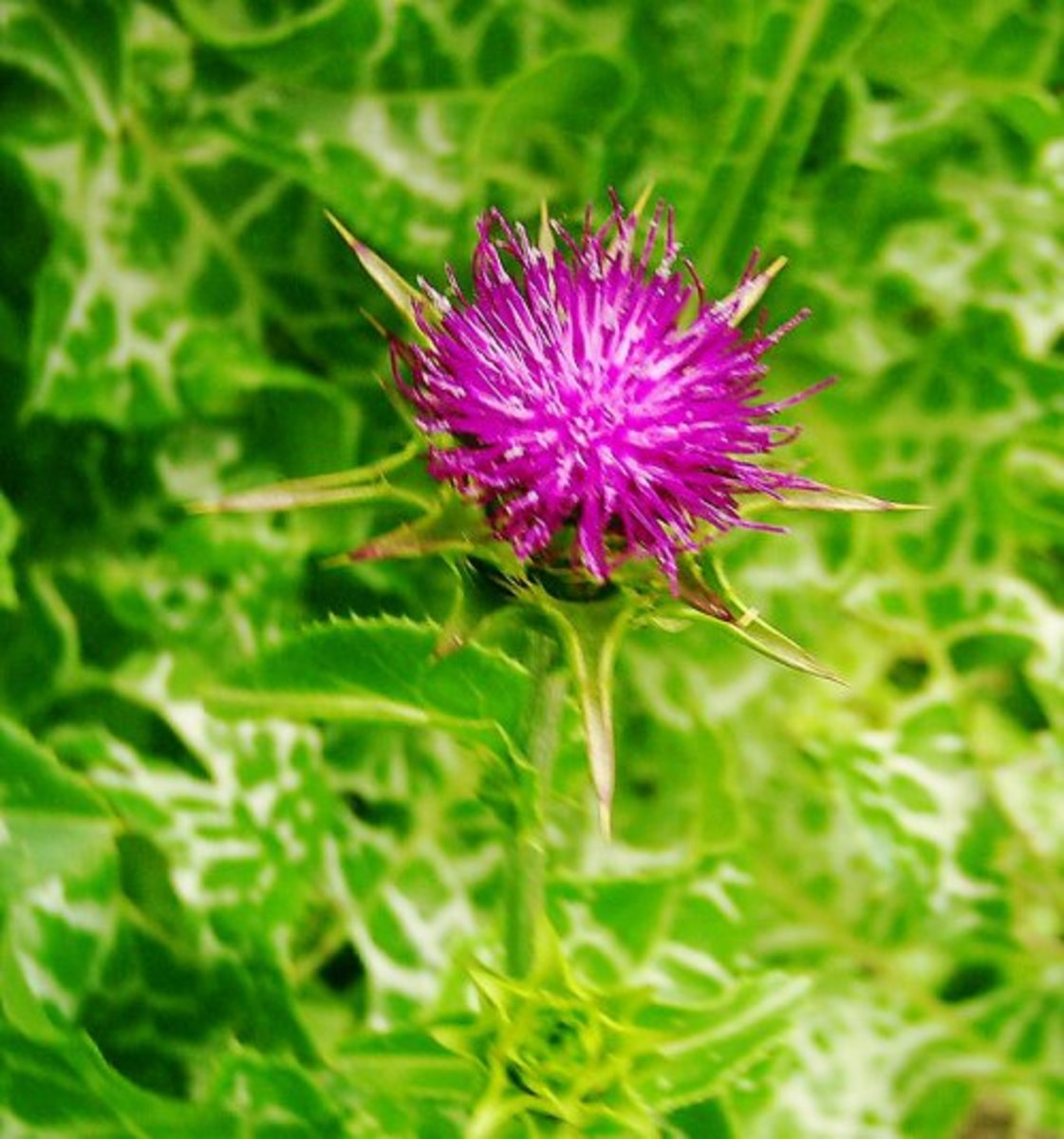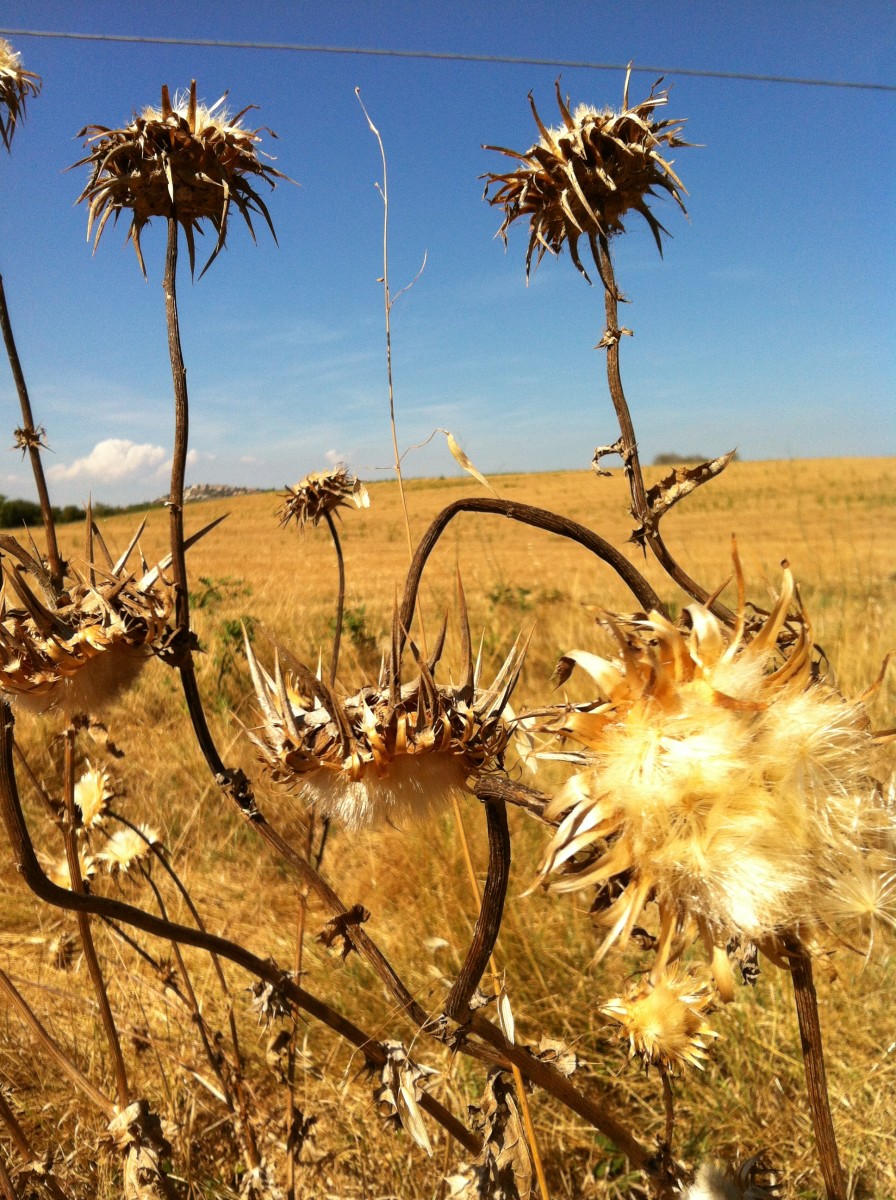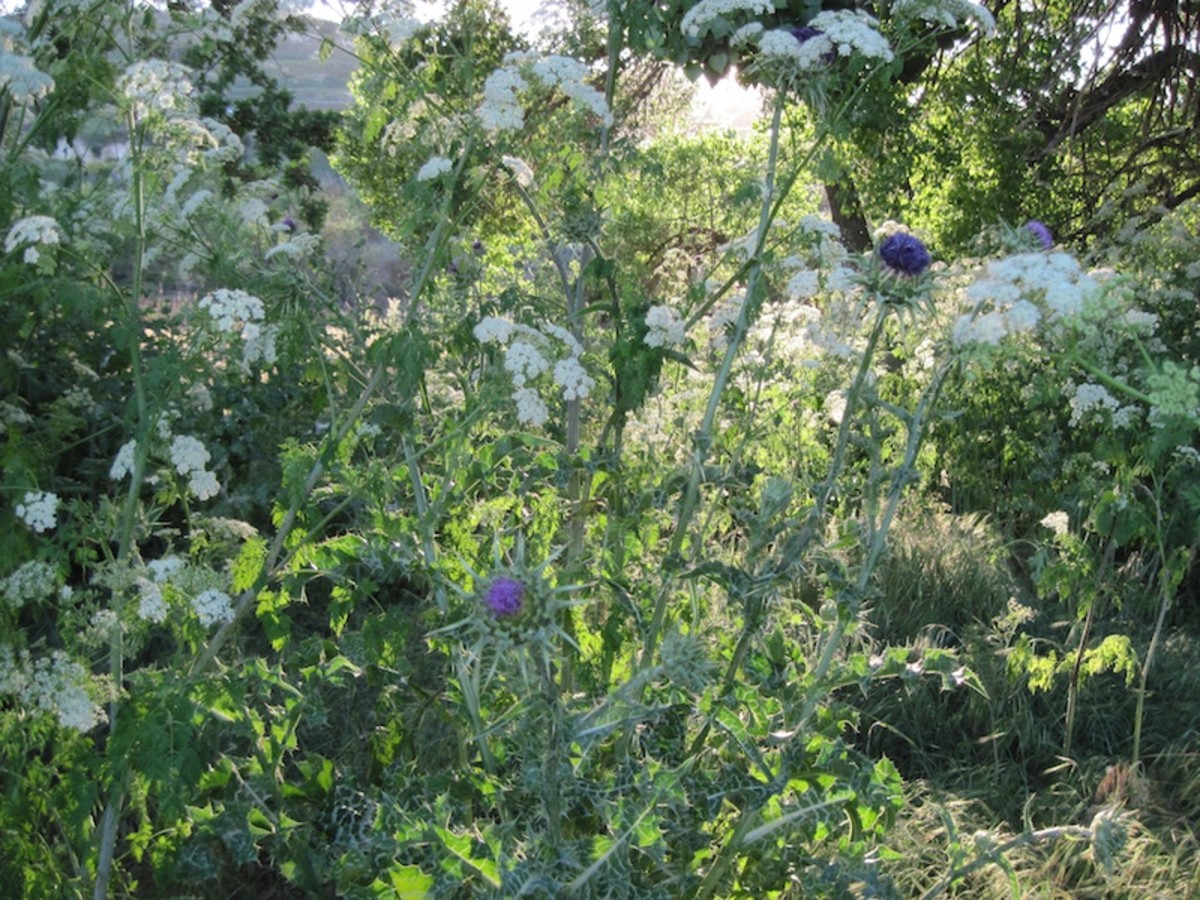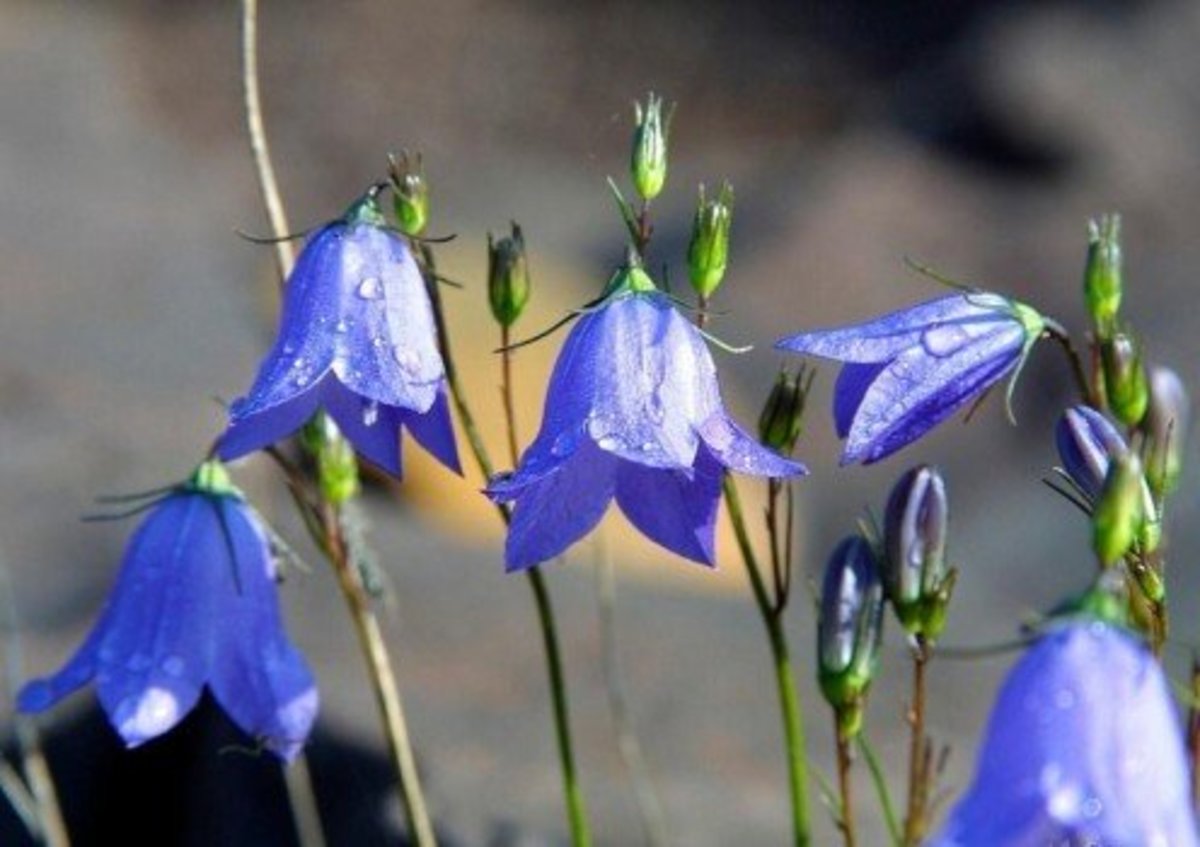Canary Islands herbs: Milk Thistle is a remedy for liver problems
Milk Thistle in bloom
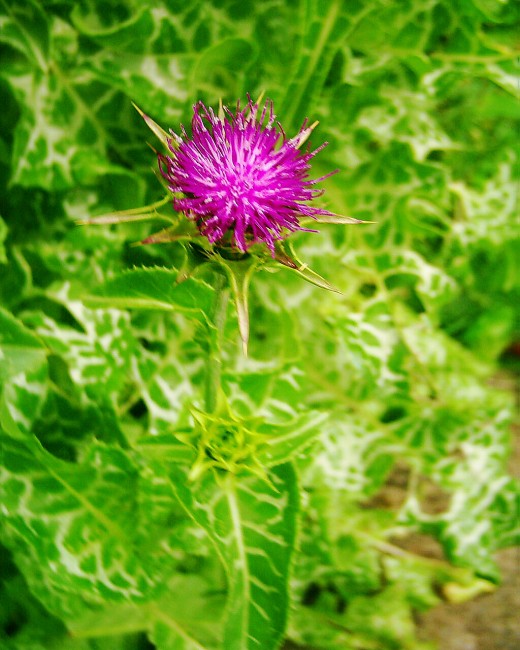
Herb of the Virgin Mary
Milk Thistle (Silybum marianum) is, as its Latin name suggests, connected with Mary, the Virgin Mary to be precise. In Spanish it is known as "Cardo mariano", the Marian thistle.
Now the Virgin Mary is the Patron Saint of all of the Canary Islands including Tenerife, so it seems very fitting to find that Milk Thistle grows on the islands. In some places it does so well that it is thought of as a weed.
But Milk Thistle is a very valuable weed because of its medicinal properties and it is a very popular herbal supplement sold in health stores in capsules, as tablets, tea-bags and tinctures.
Description of Milk Thistle
Milk Thistle is a showy biennial herb that grows from one to two metres in height. It grows on waste ground, roadsides and cultivated land and produces large purple flowers in typical thistle fashion. The Milk Thistle has creamy-white marbling on its big prickly leaves and the plant contains a milky sap too.
The mottling on the leaves and the white latex in the herb are why it is linked so strongly with the Virgin Mary, and there is also a rare white-flowered variety that can be found on Tenerife. Milk Thistle is also found in Mediterranean countries and grown elsewhere in the world in herb gardens.
Milk Thistle contains a substance known as silymarin which is known to be a good tonic for the liver and a remedy for liver complaints such as cirrhosis. It has been used a a herbal treatment for hepatitis and it helps the liver deal with toxins and thus aids in the putification of the body.
Milk Thistle has been found to be very good for combating the harmful effects of drugs, alcohol and the poisonous Amanita mushrooms.
The silymarin is normally extracted from the seeds and Milk Thistle tea-bags contain seeds as well. The leaves and seeds have been used to treat coughs, haemorrhoids, varicose veins, depression and gall-bladder and spleen complaints.
Milk Thistle can help the digestion and the circulation, as well as being a tonic for the appetite and a means of lowering cholesterol in the body.
Some authorities have recommended Milk Thistle seeds as a way of preventing and treating travel sickness too.
With all the uses Milk Thistle has it is perhaps not surprising to find that David Bramwell, author of many books on the flora and fauna of the Canary Islands, says in his book Medicinal Plants of the Canary Islands that the herb would be included in the species he would choose to have with him if stranded on a Desert Island.
Milk Thistle to treat the liver
Milk Thistle seeds on Amazon
Milk Thistle as an edible plant
The young leaves and shoots of Milk Thistle can have their prickles removed and then be added to salads. The leaves can also be cooked as greens if first treated this way too.
Milk Thistle roots can be eaten raw or boiled or roasted. As a cooked vegetable they are said to be good with butter on them.
The stems of Milk Thistle can be peeled and soaked overnight in water to remove any bitterness. After this they can be added as an ingredient in stews.
Milk Thistle bracts that form around the flowers can also be eaten in the same fashion as those of the Globe Artichoke.
Milk Thistle provides a wealth of beneficial uses and it also looks very attractive too.
Milk Thistle links
© 2010 Steve Andrews


